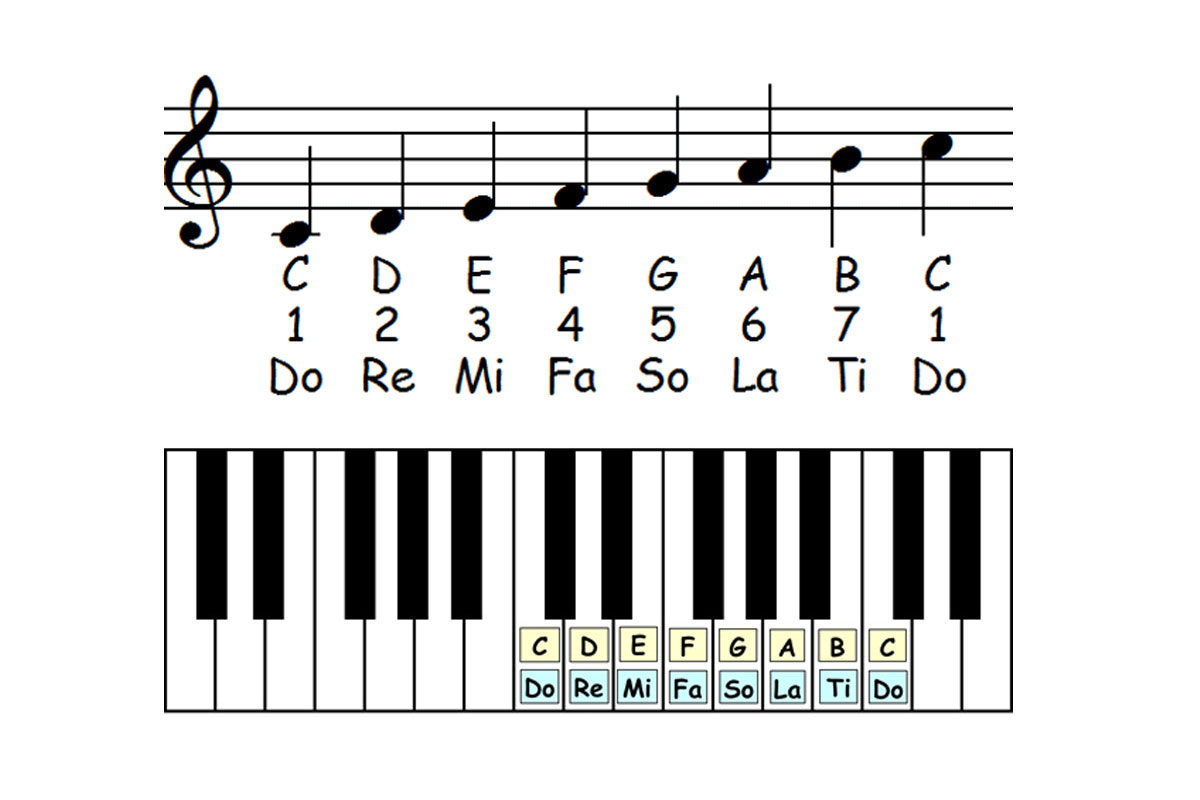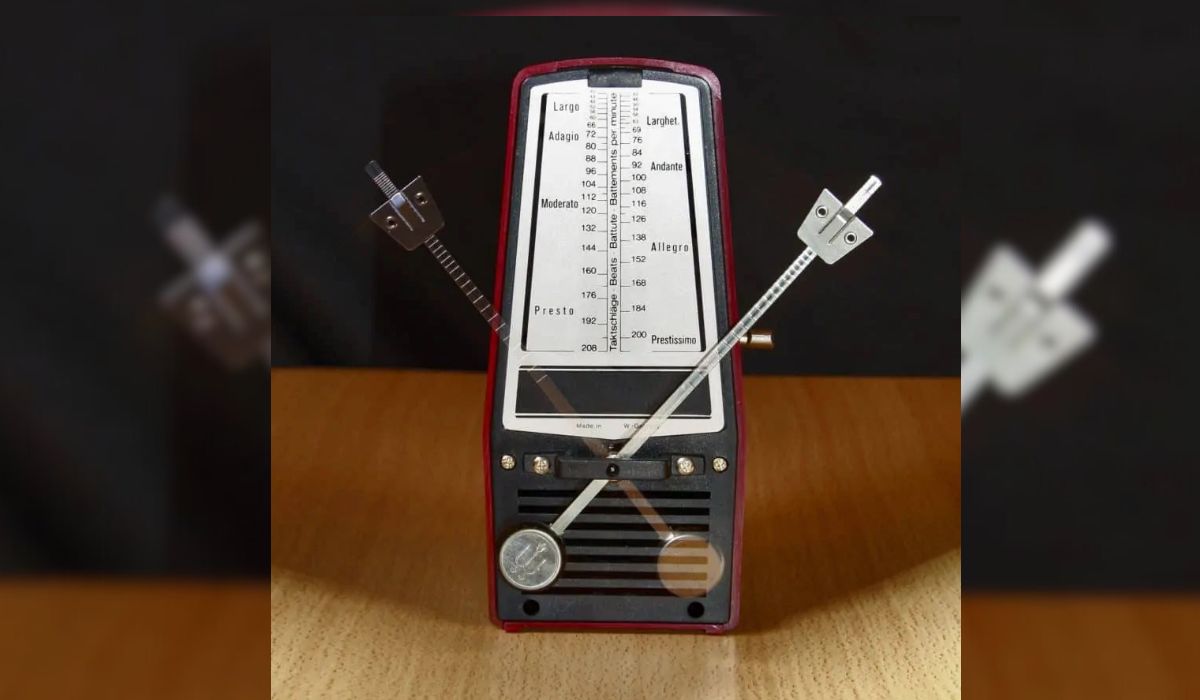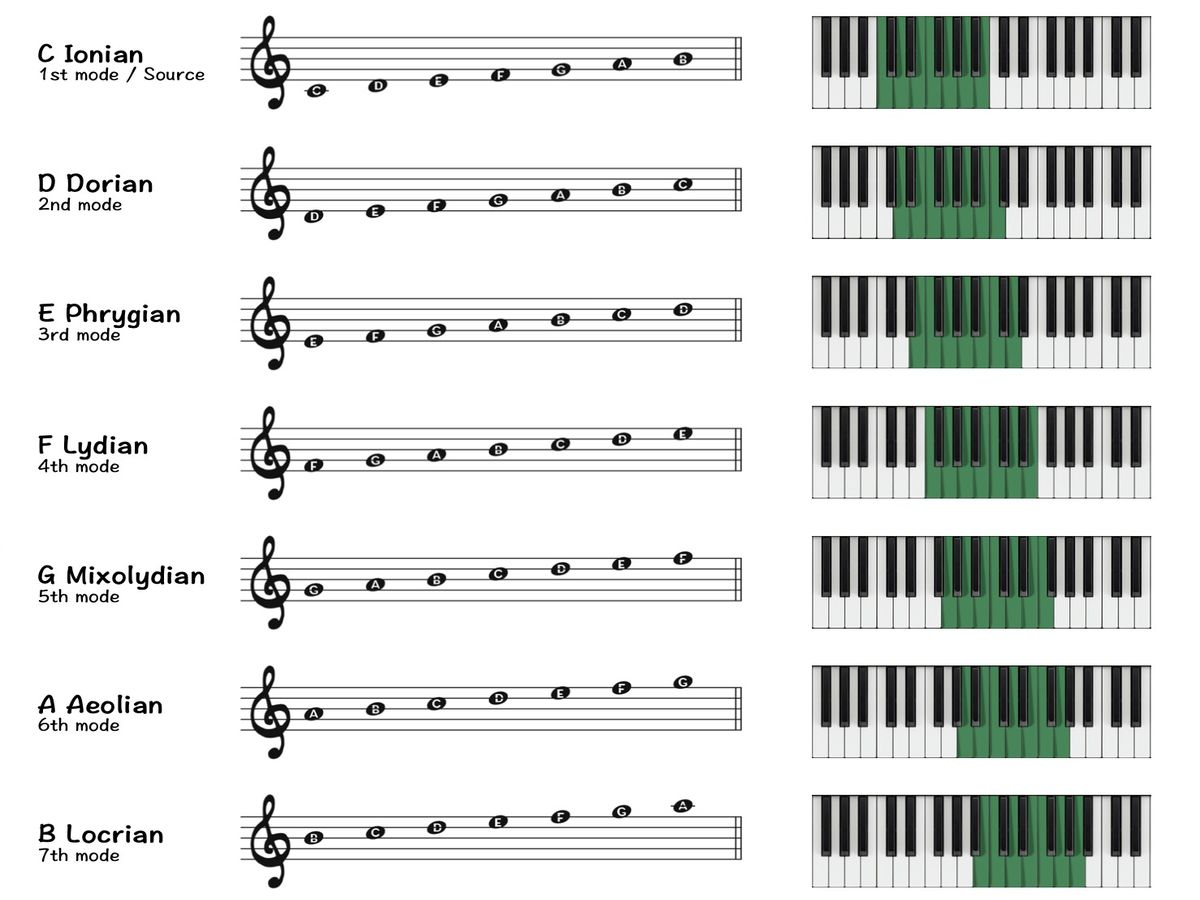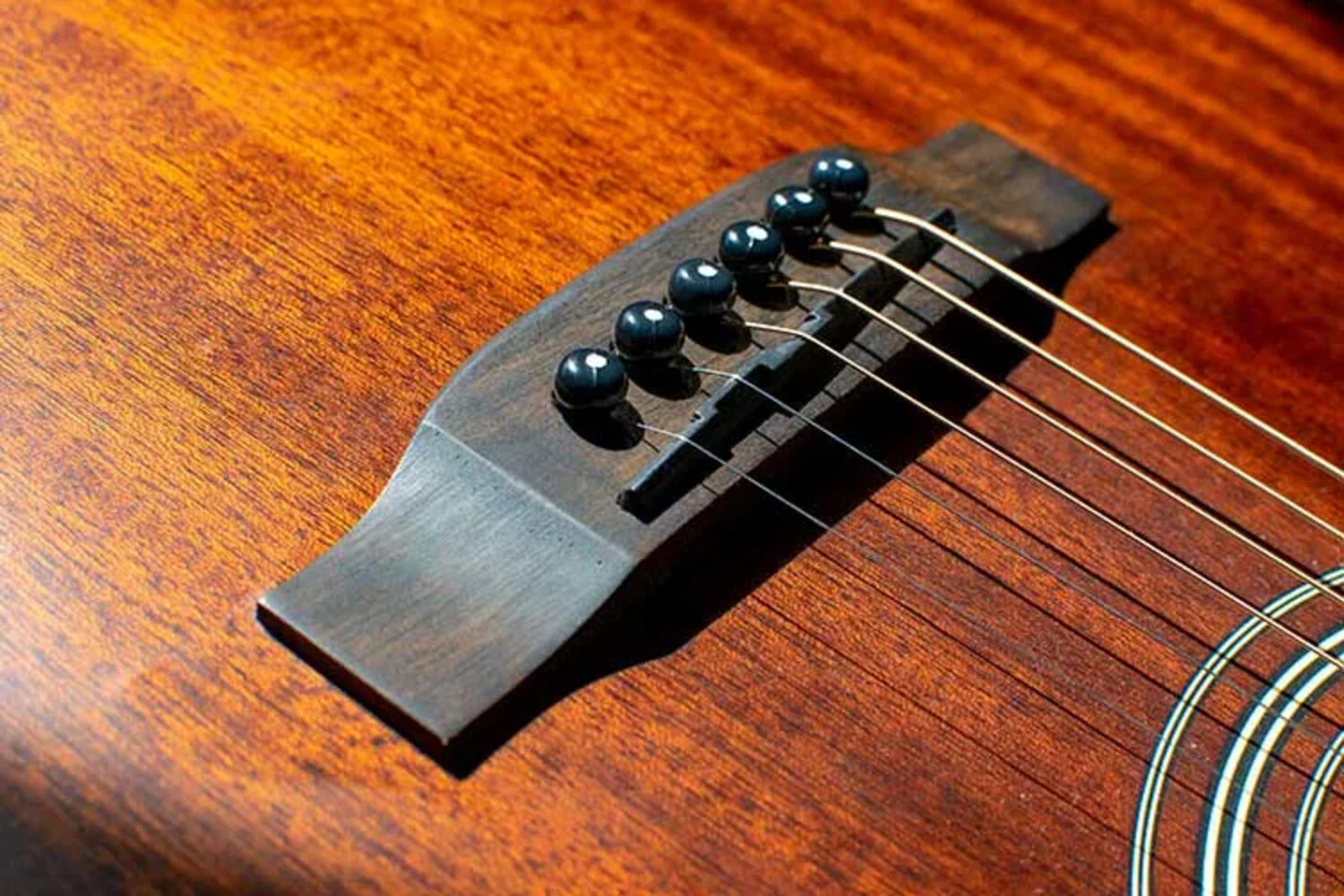Home>Instruments>Guitar>What Is Guitar Scale Length


Guitar
What Is Guitar Scale Length
Published: February 15, 2024
Learn about the guitar scale length and its impact on playability and tone. Discover how different scale lengths affect the sound and feel of the guitar.
(Many of the links in this article redirect to a specific reviewed product. Your purchase of these products through affiliate links helps to generate commission for AudioLover.com, at no extra cost. Learn more)
Table of Contents
Introduction
Understanding the Significance of Guitar Scale Length
When it comes to the intricate world of guitars, one of the fundamental aspects that greatly influences the instrument's playability and tonal characteristics is the scale length. Guitar scale length refers to the vibrating length of the strings from the nut to the bridge, and it plays a pivotal role in determining the overall feel and sound of a guitar. Understanding the concept of scale length is essential for any guitarist, whether you're a seasoned player or just starting your musical journey.
The scale length of a guitar is typically measured from the saddle's front edge to the nut, representing the vibrating length of the strings. It directly impacts the tension and pitch of the strings, thereby affecting the instrument's playability and tonal qualities. Different types of guitars, such as electric, acoustic, and classical, often feature varying scale lengths, each contributing to a distinct playing experience.
Exploring the significance of scale length delves into the intricate relationship between string tension, fret spacing, and overall tonal response. By unraveling this relationship, guitarists can gain valuable insights into how scale length influences the instrument's sound and feel, ultimately empowering them to make informed decisions when selecting a guitar that aligns with their playing style and sonic preferences.
Understanding the impact of scale length is not only beneficial for guitarists but also for enthusiasts and individuals seeking to delve deeper into the art and science of guitar construction and design. Whether you're drawn to the warm, resonant tones of a longer scale length or the snappy, articulate response of a shorter scale, comprehending the nuances of scale length can enrich your appreciation for the instrument and open up new avenues for sonic exploration.
In the following sections, we will delve into the intricacies of guitar scale length, exploring its effects on tone, playability, and overall musical expression. By gaining a deeper understanding of this foundational element, you will be better equipped to make informed decisions when choosing a guitar that resonates with your musical aspirations and artistic sensibilities.
Understanding Guitar Scale Length
Scale length, a crucial factor in the construction of guitars, refers to the distance between the nut and the saddle, determining the length of the strings that are free to vibrate. This measurement significantly impacts the tension and pitch of the strings, ultimately influencing the playability and tonal characteristics of the instrument.
Scale length is directly linked to the fret spacing on the fingerboard. Longer scale lengths are often associated with wider fret spacing, making them ideal for players with larger hands or those who prefer more room between the frets. Conversely, shorter scale lengths feature narrower fret spacing, catering to individuals with smaller hands or those who favor a closer fret arrangement.
Moreover, the scale length affects the overall tension of the strings. Longer scale lengths generally result in higher string tension, which can contribute to a more robust and resonant tone, as well as increased sustain. On the other hand, shorter scale lengths tend to produce a slightly looser feel, making string bending and vibrato more accessible, and yielding a warmer, more mellow sound.
Understanding the nuances of scale length is essential for guitarists, as it can influence their playing experience and sonic preferences. While electric guitars commonly feature scale lengths ranging from 24.75 inches to 25.5 inches, acoustic guitars may have longer scale lengths, typically falling between 24.9 inches and 25.7 inches. Classical guitars, known for their rich, warm tones, often boast even longer scale lengths, typically around 26 inches.
It’s worth noting that while scale length significantly impacts the guitar’s tonal qualities, it is just one of many factors contributing to the instrument’s overall sound. The type of wood used, the guitar’s body shape, and the design of the pickups (in the case of electric guitars) all play integral roles in shaping the final sonic output.
By comprehending the intricacies of scale length, guitarists can make informed decisions when selecting an instrument that aligns with their playing style and sonic preferences. Whether seeking the enhanced resonance of a longer scale or the effortless playability of a shorter scale, understanding the impact of scale length is key to unlocking the full potential of the instrument and elevating the musical journey.
How Scale Length Affects Guitar Sound
The scale length of a guitar profoundly influences its sonic characteristics, playing a pivotal role in shaping the instrument’s tonal qualities and overall sound. Understanding how scale length affects the guitar’s sound can provide valuable insights for musicians seeking to explore the nuances of tone and sonic expression.
One of the primary ways in which scale length impacts the guitar’s sound is through string tension. Longer scale lengths generally result in higher string tension, which can contribute to a brighter, more articulate sound with enhanced sustain. The increased tension allows for greater energy transfer from the strings to the guitar’s body, resulting in a more pronounced and resonant tone. In contrast, shorter scale lengths often yield a slightly warmer, more mellow sound due to the lower string tension, offering a more relaxed playing feel and a smoother overall tonal response.
Furthermore, scale length influences the harmonic content and overtone series produced by the strings. Longer scale lengths can accentuate higher-order harmonics, contributing to a more complex and detailed sonic profile with a more extended sustain. On the other hand, shorter scale lengths may exhibit a more focused fundamental tone with a subdued high-end response, yielding a distinct sonic character characterized by a softer attack and a more rounded tonal profile.
The relationship between scale length and tonal response is particularly evident when considering the impact on the guitar’s low-end frequencies. Longer scale lengths often exhibit a more pronounced low-end presence, delivering a robust and defined bass response that adds depth and richness to the instrument’s overall sound. In contrast, shorter scale lengths may produce a tighter, more controlled low end, offering a punchy and well-defined bass register that complements a brighter and more focused midrange and treble.
It’s important to note that while scale length significantly influences the guitar’s sound, it is just one of many factors contributing to the instrument’s overall tonal characteristics. The choice of tonewoods, the guitar’s body shape, and the design of the pickups (in the case of electric guitars) all play integral roles in shaping the final sonic output. Therefore, while scale length undeniably shapes the instrument’s sonic profile, it is essential to consider it within the broader context of the guitar’s construction and design.
By recognizing the profound impact of scale length on the guitar’s sound, musicians can gain a deeper appreciation for the instrument’s sonic versatility and the intricate interplay between design elements and tonal expression. Whether seeking a bright, articulate sound with enhanced sustain or a warm, mellow tone with a relaxed playing feel, understanding the influence of scale length is crucial for honing one’s sonic identity and musical expression.
Different Types of Guitar Scale Lengths
Guitar scale lengths vary across different types of guitars, each contributing to distinct playing experiences and tonal characteristics. Understanding the differences between various scale lengths can empower musicians to make informed decisions when selecting a guitar that aligns with their playing style and sonic preferences.
Electric guitars commonly feature scale lengths ranging from 24.75 inches to 25.5 inches. The 24.75-inch scale length, often associated with classic Gibson models, such as the Les Paul, offers a slightly shorter and more relaxed playing feel, making it conducive to fluid string bending and expressive vibrato. On the other hand, the 25.5-inch scale length, prevalent in many Fender models like the Stratocaster and Telecaster, provides a more extended and articulate tonal response, with enhanced brightness and sustain.
Acoustic guitars, known for their rich and resonant tones, typically boast longer scale lengths compared to electric guitars, ranging from 24.9 inches to 25.7 inches. The longer scale length contributes to increased string tension, resulting in a more robust and pronounced acoustic projection, along with enhanced sustain and a vibrant tonal character. This extended scale length is often favored by fingerstyle players and those seeking a lush, complex acoustic sound.
Classical guitars, renowned for their warm and expressive tones, feature even longer scale lengths, typically around 26 inches. The extended scale length, combined with the nylon strings commonly used on classical guitars, yields a rich, resonant sound with a beautifully articulated tonal palette. The longer scale length enhances the instrument’s low-end response and sustain, contributing to the classical guitar’s distinctive sonic identity.
Beyond the traditional acoustic and electric guitars, baritone guitars and extended-range instruments introduce further diversity in scale lengths. Baritone guitars, designed with longer scale lengths typically ranging from 27 to 30 inches, offer a deep, resonant tonal range, providing an expanded sonic canvas for lower tunings and extended-range playing. These extended scale lengths enable baritone guitars to produce a powerful, defined low end with exceptional clarity and depth.
Extended-range guitars, including 7-string, 8-string, and multi-scale instruments, feature varied scale lengths tailored to accommodate additional strings and extended tonal ranges. The diverse scale lengths in these instruments are meticulously designed to optimize string tension, tonal balance, and playability across the extended range, offering musicians unprecedented sonic versatility and expressive potential.
By recognizing the diverse scale lengths across different types of guitars, musicians can navigate the rich tapestry of sonic possibilities and tailor their instrument choices to suit their artistic vision and musical aspirations. Whether drawn to the expressive warmth of a longer scale length or the dynamic playability of a shorter scale, understanding the nuances of scale length is essential for unlocking the full spectrum of tonal expression and musical creativity.
Choosing the Right Scale Length for Your Playing Style
When selecting a guitar, whether electric, acoustic, or classical, choosing the right scale length is a crucial consideration that directly impacts your playing experience and tonal preferences. Understanding how scale length aligns with your playing style can guide you toward a guitar that resonates with your musical aspirations and facilitates your expressive journey.
If you are drawn to the fluidity of string bending, expressive vibrato, and a more relaxed playing feel, a guitar with a shorter scale length may be well-suited to your style. Shorter scale lengths, such as the 24.75-inch scale found in many Gibson models, offer a slightly looser string tension, making it easier to execute expressive techniques while yielding a warm, mellow tonal character. This can be particularly advantageous for blues, rock, and jazz players seeking enhanced playability and a more laid-back feel.
Conversely, if you gravitate toward a more articulate and bright tonal response, along with extended sustain and a tighter playing feel, a guitar with a longer scale length, such as the 25.5-inch scale commonly found in Fender instruments, may align with your sonic preferences. The increased string tension and pronounced tonal clarity associated with longer scale lengths can benefit genres that demand a more defined and vibrant sound, such as country, pop, and rock.
For acoustic guitarists, the choice of scale length can significantly influence the instrument’s tonal projection, playability, and sonic character. Longer scale lengths, typically ranging from 24.9 to 25.7 inches, are often favored by fingerstyle players and those seeking a robust, resonant acoustic sound with enhanced sustain and tonal complexity. Alternatively, shorter scale lengths may cater to individuals seeking a more relaxed playing experience and a warmer, mellow acoustic tone.
Classical guitarists, known for their expressive phrasing and rich tonal palette, often embrace the extended scale length of approximately 26 inches, which contributes to the instrument’s distinctive warmth and resonance. The longer scale length enhances the classical guitar’s low-end response and sustain, enriching its expressive capabilities and allowing for nuanced tonal articulation.
When exploring extended-range guitars, including baritones and multi-scale instruments, the choice of scale length becomes even more nuanced, with considerations for tonal range, string tension, and playability across the extended register. Musicians delving into these instruments can tailor their scale length preferences to accommodate their specific sonic objectives and playing requirements, whether seeking a deep, resonant baritone sound or the expanded tonal palette of a multi-scale instrument.
Ultimately, choosing the right scale length for your playing style involves a thoughtful consideration of your sonic preferences, technical demands, and expressive aspirations. By aligning the scale length with your musical identity and artistic vision, you can embark on a harmonious musical journey, empowered by an instrument that resonates with your unique voice and creative spirit.
Conclusion
Exploring the intricate realm of guitar scale length unveils a profound understanding of its impact on playability, tonal characteristics, and sonic expression. Scale length, defined by the distance between the nut and the saddle, serves as a fundamental factor in shaping the personality of a guitar, offering diverse sonic possibilities and tailored playing experiences across different types of instruments.
By comprehending the significance of scale length, musicians can make informed decisions when selecting a guitar that harmonizes with their playing style and sonic preferences. Whether drawn to the expressive warmth of a longer scale length, the dynamic playability of a shorter scale, or the expanded tonal range of extended-range instruments, understanding the nuances of scale length is pivotal for unlocking the full spectrum of tonal expression and musical creativity.
The profound influence of scale length on the guitar’s sound, string tension, and tonal response underscores its integral role in shaping the instrument’s sonic identity. Whether navigating the vibrant tonal clarity of longer scale lengths or embracing the warm, mellow character of shorter scales, musicians can harness the sonic versatility offered by scale length to articulate their musical vision and expressive narrative.
As the journey of musical exploration unfolds, the choice of scale length becomes a deeply personal and artistic consideration, reflecting the unique voice and creative spirit of each musician. Whether seeking the fluidity of string bending, the resonant depth of acoustic projection, or the expanded tonal palette of extended-range instruments, the right scale length serves as a harmonious companion, empowering musicians to articulate their sonic identity and embark on a transformative musical odyssey.
In essence, the world of guitar scale length embodies a rich tapestry of sonic nuances, technical intricacies, and expressive possibilities, inviting musicians to embark on a resonant journey of sonic discovery and artistic fulfillment. By embracing the profound influence of scale length, musicians can cultivate a deeper connection with their instruments, unravel the boundless potential of tonal expression, and weave their unique sonic narratives with unwavering creativity and impassioned artistry.











